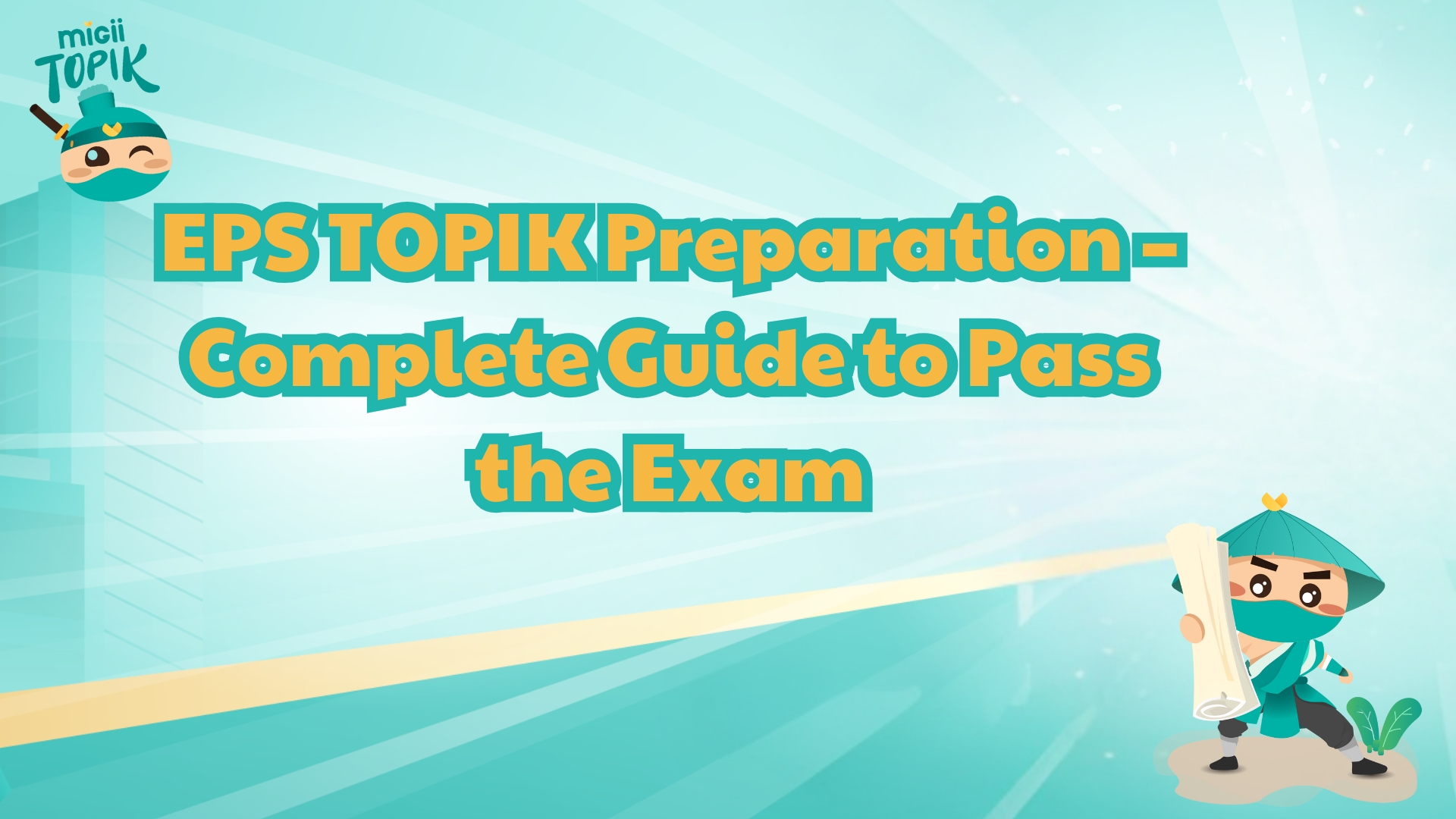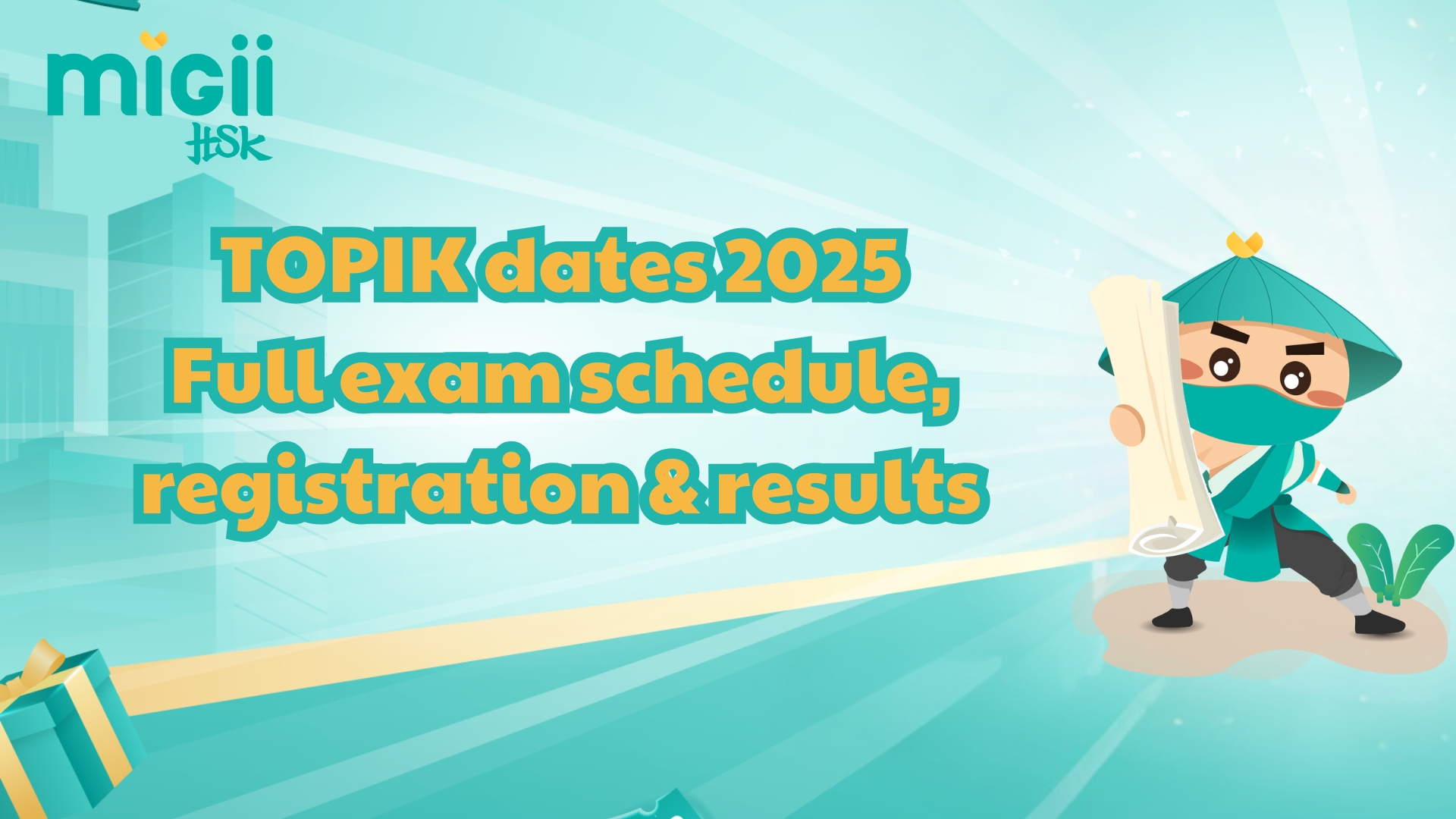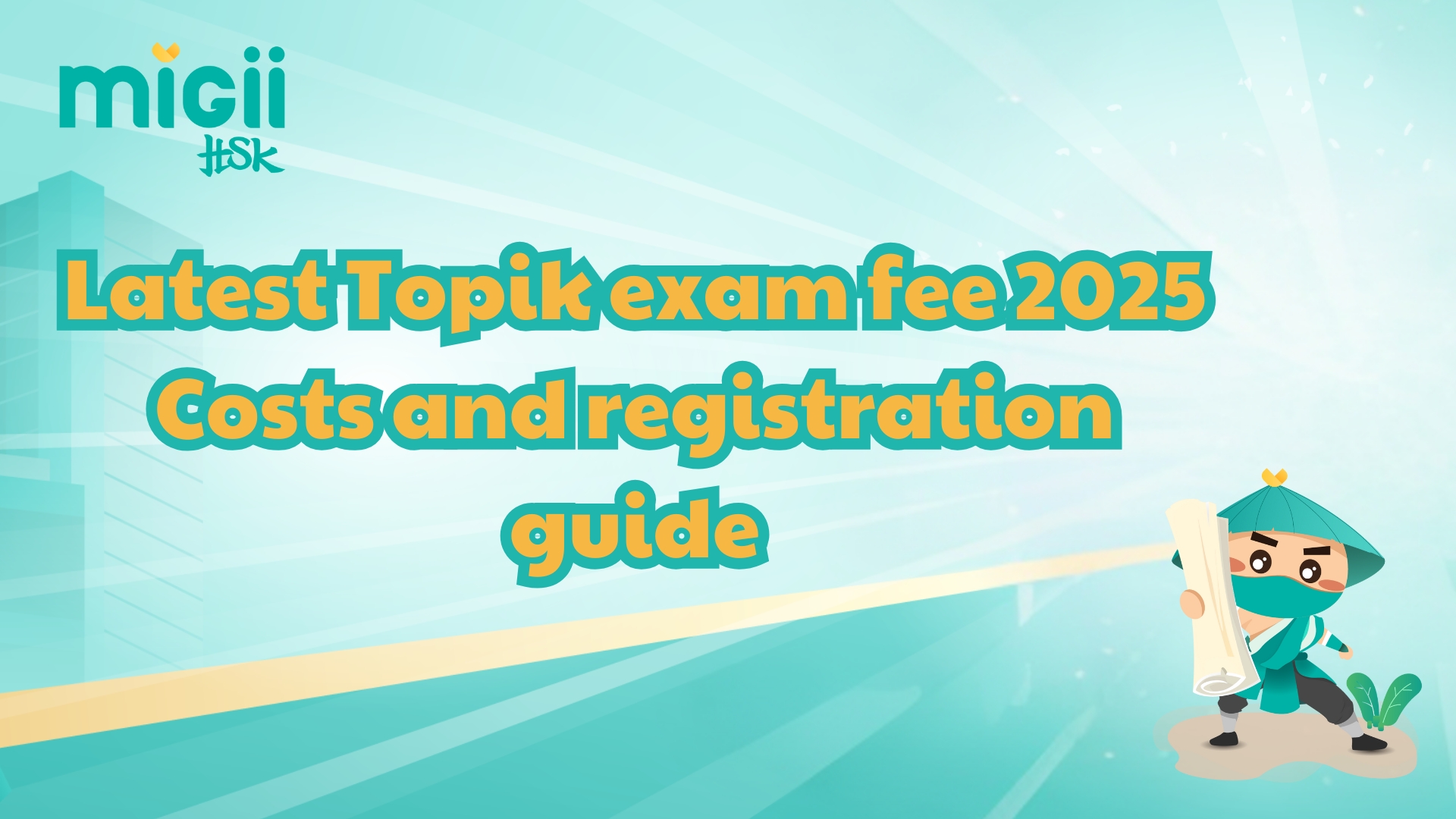JLPT sections cover vocabulary, grammar, reading, and listening, each testing specific skills. Understanding their structure is key for effective preparation and time management. From N5 to N1, formats and difficulty levels vary, requiring tailored strategies. Join Migii to explore the JLPT question format and master every section.
Overview of the JLPT test structure
The Japanese-Language Proficiency Test (JLPT) is an exam that evaluates the Japanese skills of non-native speakers. It is widely used for study, work, and immigration purposes in Japan. The test answers the common question, is JLPT all multiple choice, by using a format that measures real-life language use. Its credibility makes it a standard requirement in many institutions.
The JLPT assesses vocabulary, grammar, reading comprehension, and listening skills. Candidates face tasks that test both knowledge and practical application of the language. Higher levels present more complex texts and conversations, demanding advanced understanding. This structure ensures fair evaluation across all proficiency levels.
The exam has five levels: N5, N4, N3, N2, and N1, with N5 being the easiest and N1 the hardest. To clarify for those wondering, is the JLPT multiple choice, the answer is yes, questions cover kanji reading, sentence completion, and listening exercises. While there is no speaking or writing section, success demands accuracy and good time management.
- N5: This is the most basic level of the Japanese-Language Proficiency Test. At this level, learners can read simple words in Hiragana, Katakana, and some basic Kanji, and they can understand the main ideas in short conversations.
- N4: This level allows learners to read more words and phrases, understand longer texts written with Kanji, and speak slowly while comprehending longer conversations in daily life.
- N3: At this level, learners can read texts in various language styles, summarize main ideas, and use intermediate-level conversational patterns.
- N2: Learners at this level can read fluently, understand storylines, analyze content, and communicate flexibly in everyday and work situations.
- N1: This is the highest level, where learners can speak and use Japanese fluently, communicate with native speakers without difficulty, and discuss complex or abstract topics while expressing personal opinions.
So, check out the table below to understand the JLPT length and learn how to manage your time effectively during the test:
|
Level |
Language Knowledge (Vocabulary) |
Language Knowledge (Grammar) + Reading |
Listening |
Total Time |
|
N5 |
25 minutes |
50 minutes |
30 minutes |
105 minutes |
|
N4 |
30 minutes |
60 minutes |
35 minutes |
125 minutes |
|
N3 |
30 minutes |
70 minutes |
40 minutes |
140 minutes |
|
N2 |
105 minutes |
50 minutes |
155 minutes |
|
|
N1 |
110 minutes |
60 minutes |
170 minutes |
|
JLPT tests Japanese skills through multiple-choice questions across levels
JLPT structure by level
The JLPT is divided into five levels, each testing different language skills and grammar complexity. Understanding the jlpt sections helps you focus your study on the right level, from basic N5 to advanced N1 proficiency.
JLPT N5 structure
JLPT N5 is the most basic level of the Japanese Language Proficiency Test, designed for beginners to assess fundamental skills. The JLPT N5 exam format tests essential grammar, vocabulary, reading, and listening abilities. Understanding the JLPT N5 structure is crucial for focused preparation.
The JLPT N5 test format includes straightforward tasks to evaluate your grasp of basic Japanese. Knowing the JLPT N5 format helps you manage your study time effectively. The JLPT N5 test structure is divided into language knowledge, reading comprehension, and listening sections.
Being aware of the JLPT N5 number of questions and JLPT N5 how many questions in each section will help you strategize your exam approach.
|
Test Section |
Title |
Number of Questions |
Objective |
|
|
Phần 1: 言語知識 25 minutes |
漢字-語彙 |
1/ 漢字読み |
12 |
How to read Japanese words written in Kanji |
|
2/ 表記 |
8 |
How Hiragana words are converted into Kanji or Katakana |
||
|
3/ 文脈規定 |
10 |
According to the context, find the vocabulary that fits semantically |
||
|
4/ 言い換え類義 |
5 |
Find expressions or Japanese words with similar meanings |
||
|
Phần 2: 言語知識 ‐ 読解 (50 minutes) |
文法 |
1/ 文の文法 |
16 |
Ability to judge appropriate Japanese grammar forms based on sentence content |
|
2/ 文の文法 |
5 |
Ability to create coherent and grammatically correct sentences |
||
|
3/ 文章の文法 |
5 |
Ability to judge which sentence fits the flow of the Japanese passage |
||
|
読解 |
4/ 内容理解 (短文) |
3 |
Read and understand a short text (~80 Kanji characters) related to school, life, or work |
|
|
5/ 内容理解 (中文) |
2 |
Read and understand a text (~250 Kanji characters) related to daily life topics |
||
|
6/ 情報検索 |
1 |
Ability to find necessary information in simple news, instructions (~250 Kanji characters) |
||
|
Phần 3: 聴解 (30 minutes) |
1/ 課題理解 |
7 |
Ability to understand content of a passage or conversation and grasp necessary information |
|
|
2/ ポイント理解 |
6 |
Ability to understand key points in a passage or conversation |
||
|
3/ 発表現話 |
5 |
Listen while looking at pictures and choose the appropriate dialogue |
||
|
4/ 即時応答 |
6 |
Listen to short dialogues or questions and select appropriate responses |
||
JLPT N4 structure
Unlike N5, which focuses mainly on recognizing characters, basic structures, short texts, and conversations, N4 requires test takers to memorize around 1,500 vocabulary words and 300 kanji. Understanding how many questions in JLPT N4 helps you prepare more effectively. The grammar and vocabulary tested are broader, demanding flexible language use.
Reading passages at N4 are longer and more complex, including texts with up to 600 kanji characters. Knowing how many questions are there in JLPT N4 helps you allocate your exam time wisely. Listening sections include detailed conversations requiring quick comprehension.
Following the JLPT N4 exam pattern and knowing the JLPT N4 number of questions will improve your test-taking strategy.
|
Test Sections |
Title |
Number of Questions |
Objective |
|
|
Phần 1:言語知識 (30 minutes) |
文字-語彙 |
1/ 漢字読み |
9 |
Reading how vocabulary words written in kanji are pronounced |
|
2/ 表記 |
6 |
Converting vocabulary written in hiragana into kanji or katakana |
||
|
3/ 文脈規定 |
10 |
Finding vocabulary that fits semantically according to the context |
||
|
4/ 言い換え類義 |
5 |
Finding synonyms or expressions with similar meaning |
||
|
5/ 用法 |
5 |
Understanding how vocabulary is used in given sentences |
||
|
Phần 2: 言語知識 ‐ 読解 (60 minutes) |
文法 |
1/ 文の文法 |
15 |
Identifying suitable Japanese grammar forms for sentence meaning |
|
2/ 文の文法 |
5 |
Constructing coherent and grammatically correct Japanese sentences |
||
|
3/ 文章の文法 |
5 |
Judging which sentence fits the flow of the passage |
||
|
読解 |
4/ 内容理解(短文) |
4 |
Reading and understanding a text of about 100–200 kanji related to explanations or instructions on work/life |
|
|
5/ 内容理解(中文) |
4 |
Reading a text of about 350 kanji, understanding keywords and cause-effect relationships |
||
|
6/ 情報検索 |
2 |
Finding necessary information in Japanese advertisements or flyers with about 600 basic kanji |
||
|
Phần 3: 聴解 (35 minutes) |
1/ 課題理解 |
8 |
Understanding the content of spoken passages or dialogues, identifying necessary info and next suitable action |
|
|
2/ ポイント理解 |
7 |
Understanding main points from spoken passages or dialogues based on prior instruction |
||
|
3/ 発表現話 |
5 |
Choosing appropriate responses based on pictures and spoken explanations |
||
|
4/ 即時応答 |
8 |
Selecting suitable responses to short spoken questions |
||
JLPT N3 structure
The JLPT N3 structure is similar to N4 and N5 but includes three additional sections in Vocabulary, Reading, and Listening. Understanding the JLPT N3 structure helps you navigate these changes smoothly. Notably, Reading is separated with extra scoring rules, and Grammar is combined with Vocabulary for scoring. This setup reflects the step up in difficulty at this level.
At N3, vocabulary expands to about 3,750 words and 650 kanji, with more intermediate grammar patterns. The reading passages are longer, up to 600 characters, requiring deep comprehension and analysis. Listening features more natural conversations with richer information, demanding quick summarizing skills.
Familiarity with the JLPT N3 sections and knowing how long is the JLPT N3 test will prepare you well for success.
|
Test Sections |
Title |
Number of Questions |
Objective |
|
|
言語知識 (30 minutes) |
文字-語彙 |
1/ 漢字読み |
8 |
How to read words written in Kanji. |
|
2/ 表記 |
6 |
How words written in Hiragana are converted into Kanji or Katakana. |
||
|
3/ 文脈規定 |
11 |
Identify words that fit semantically according to the context. |
||
|
4/ 言い換え類義 |
5 |
Find expressions or synonyms close in meaning to the given words. |
||
|
5/ 用法 |
5 |
Understand how the words are used in the given sentences. |
||
|
言語知識 ‐ 読解 (70 minutes) |
文法 |
1/ 文の文法1 |
13 |
Determine the grammar form that suits the sentence meaning. |
|
2/ 文の文法2 |
5 |
Construct coherent and grammatically correct sentences. |
||
|
3/ 文章の文法 |
5 |
Identify sentences that fit the flow of the passage. |
||
|
読解 |
4/ 内容理解(短文) |
4 |
Read and understand short texts (100 - 200 kanji), such as explanations or instructions related to work and daily life. |
|
|
5/ 内容理解(中文) |
6 |
Read and understand texts (~350 kanji), such as explanations or essays, recognizing keywords and cause-effect relationships. |
||
|
6/ 主張理解(長文) |
4 |
Read and grasp the main idea and argument development in longer texts (~500 kanji), including essays and letters. |
||
|
7/ 情報検索 |
2 |
Find necessary information in advertisements or flyers with about 600 basic kanji characters. |
||
|
聴解 (40 minutes) |
1/ 課題理解 |
6 |
Understand content in spoken passages or conversations, grasping key information and following specific topics. |
|
|
2/ ポイント理解 |
6 |
Understand main points in spoken passages or conversations after given instructions. |
||
|
3/ 概要理解 |
3 |
Understand the speaker’s intention or main idea in spoken passages or conversations. |
||
|
4/ 発表現話 |
4 |
Choose appropriate dialogues while viewing pictures and listening to explanations. |
||
|
5/ 即時応答 |
9 |
Listen to short questions or statements and select suitable responses. |
||
JLPT N2 structure
JLPT N2 is an intermediate-level Japanese proficiency test with a different structure compared to lower levels. The JLPT N2 structure consists of two main sections with one break in between, unlike the three-part format with two breaks seen in JLPT N5 and N4.
The two sections are Vocabulary + Grammar + Reading comprehension, and Listening comprehension. Understanding the JLPT N2 sections is important to manage your time and focus during the exam.
The JLPT N2 test format demands a strong vocabulary base of about 6,000 words and 1,000 kanji characters. You will be expected to read and understand longer passages containing up to 900 kanji. The reading section not only tests comprehension but also your ability to analyze, infer cause-and-effect relationships, and critically evaluate the author's reasoning.
Knowing the JLPT N2 format helps you prepare strategically for these challenges
|
Test Sections |
Title |
Number of questions |
Objective |
|
|
言語知識 ‐ 読解 (105 Mminutes) |
文字-語彙 |
1/ 漢字読み |
||
|
2/ 表記 |
5 |
Ability to read words written in kanji |
||
|
3/ 語形成 |
5 |
How words written in hiragana are converted into kanji or katakana |
||
|
4/ 文脈規定 |
5 |
Knowledge of compound words and word formation |
||
|
5/ 言い換え類義 |
7 |
Identifying words that fit semantically in a given context |
||
|
6/ 用法 |
5 |
Finding expressions or words with similar meanings to given words |
||
|
5 |
Understanding how words are used in sentences |
|||
|
文法 |
7/ 文の文法1 |
12 |
Judging which grammar forms fit the meaning of sentences |
|
|
8/ 文の文法2 |
5 |
Constructing coherent sentences with correct grammar |
||
|
9/ 文章の文法 |
5 |
Judging which sentences fit the flow of the passage |
||
|
読解 |
10/ 内容理解(短文) |
5 |
Reading and understanding texts about 200 kanji characters related to work and daily life |
|
|
11/ 内容理解(中文) |
9 |
Reading texts about 500 kanji characters; understanding the author’s thought process, cause-effect relations |
||
|
12/ 統合理解 |
2 |
Reading several texts (~600 kanji) and synthesizing and comparing information |
||
|
13/ 主張理解(長文) |
3 |
Reading texts (~900 kanji) including argumentative or critical essays; grasping main opinions and intentions |
||
|
14/ 情報検索 |
2 |
Finding necessary information in advertisements, flyers, magazines (~700 kanji) |
||
|
聴解 (50 minutes)
|
1/ 課題理解 |
5 |
Understanding content from listening to passages or dialogues; grasping necessary info and topics |
|
|
2/ ポイント理解 |
6 |
Listening for key information from given dialogues or passages |
||
|
3/ 概要理解 |
5 |
Understanding speaker’s intent or main ideas from dialogues |
||
|
4/ 即時応答 |
12 |
Choosing appropriate responses after listening to short questions or statements |
||
|
5/ 統合理解 |
4 |
Listening to longer dialogues, comprehending content, and synthesizing information |
||
JLPT N1 structure
JLPT N1 is the highest level in the Japanese Language Proficiency Test for advanced learners. The JLPT N1 structure is divided into two main sections with fewer questions than N2. However, the difficulty and complexity are much greater. Managing the 170-minute test time effectively is essential for success.
The JLPT N1 exam tests knowledge of about 10,000 vocabulary words and over 2,000 kanji characters. It requires analyzing and synthesizing information from long academic or abstract texts up to 1,000 kanji. The listening section demands grasping main ideas and filtering distractions. Candidates must also interpret speakers’ intentions in complex conversations.
|
Test Sections |
Title |
Number of questions |
Objective |
|
|
言語知識 ‐ 読解 (110 minutes) |
文字-語彙 |
1/ 漢字読み |
6 |
How to read kanji words that appear in the exam |
|
2/ 文脈規定 |
7 |
Find words that fit the context and semantic meaning in the text |
||
|
3/ 言い換え類義 |
6 |
Find expressions or words similar in meaning to those given in the exam |
||
|
4/ 用法 |
6 |
Understand how the word is used in sentences provided |
||
|
文法 |
5/ 文の文法1 |
10 |
Judge which grammar forms fit the meaning of the sentences |
|
|
6/ 文の文法2 |
5 |
Construct coherent and grammatically correct sentences |
||
|
7/ 文章の文法 |
5 |
Judge which sentences fit the flow of the text |
||
|
読解 |
8/ 内容理解(短文) |
4 |
Read and understand short texts (~200 kanji), explanatory or instructional content related to work/life |
|
|
9/ 内容理解(中文) |
9 |
Understand texts (~500 kanji), including explanations, essays, or commentaries; grasp author's thinking |
||
|
10/ 内容理解(長文) |
4 |
Read and grasp main ideas in long texts (~1000 kanji), explanatory or essay style |
||
|
11/ 統合理解 |
3 |
Synthesize and compare multiple texts (~600 kanji) |
||
|
12/ 主張理解(長文) |
4 |
Understand opinions or viewpoints in abstract or editorial texts (~1000 kanji) |
||
|
13/ 情報検索 |
2 |
Find necessary information in advertisements, flyers, magazines (~700 kanji) |
||
|
聴解 (60 minutes) |
1/ 課題理解 |
6 |
Understand main ideas and details in spoken passages or dialogues |
|
|
2/ ポイント理解 |
7 |
Listen for indicated points and summarize main ideas |
||
|
3/ 概要理解 |
6 |
Understand speaker's intentions or main points in conversations |
||
|
4/ 即時応答 |
14 |
Choose appropriate responses to short spoken questions |
||
|
5/ 統合理解 |
4 |
Understand and compare information from longer dialogues |
||
Tips for performing well in each JLPT section
To excel in each section of the JLPT, it’s important to tailor your study methods specifically to the skills tested. Focused practice and strategic review can boost both your confidence and your test scores. Here are some targeted tips for each section:
- Language Knowledge (Vocabulary & Grammar): Use spaced repetition tools like Anki to review categorized vocabulary daily. Practice grammar through example sentences and pattern drills. Focus on common JLPT grammar points with targeted exercises.
- Reading Comprehension: Read practice passages at your JLPT level regularly. Use skimming to find key info and summarize paragraphs to boost understanding. Time yourself to improve reading speed and accuracy.
- Listening Comprehension: Listen daily to JLPT audios or native material. Focus on main ideas and keywords, not every word. Practice note-taking and simulate exam conditions to enhance quick responses.
- Test Strategy: Answer easy questions first, then return to harder ones. Keep track of time strictly during practice. Familiarize yourself with test format to reduce exam-day surprises.
Effective JLPT study requires targeted practice in vocabulary, grammar, reading and listening skills
Conclusion
Mastering the jlpt sections is key to passing the JLPT exam. Each part tests different skills, so focused study on vocabulary, grammar, reading, and listening is essential. Consistent practice and good strategies will boost your confidence. Trust Migii for reliable resources and expert support.








